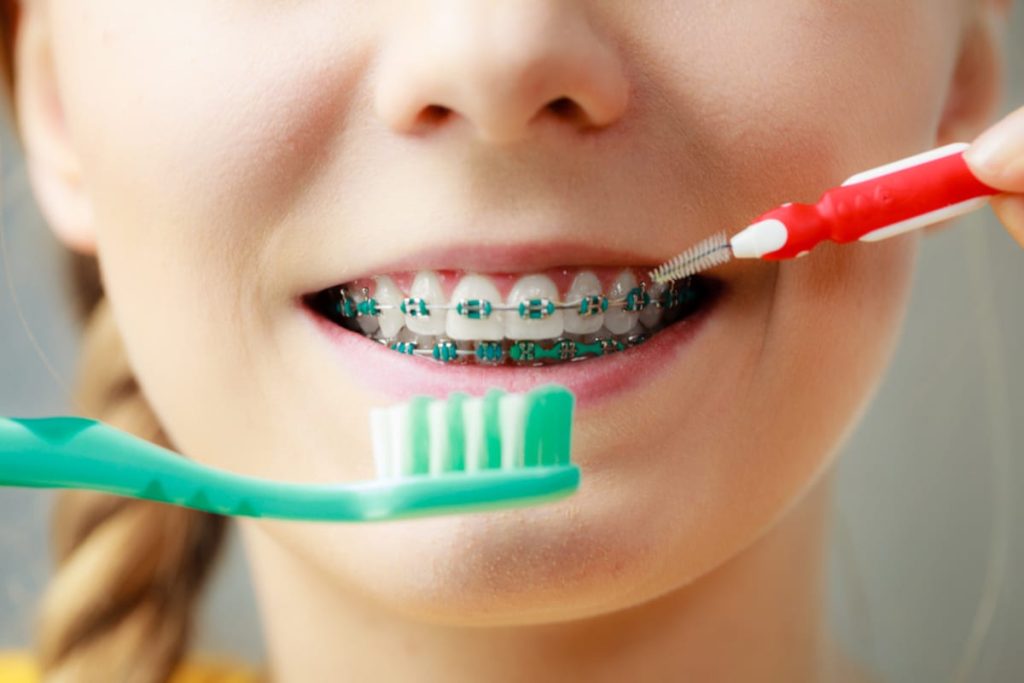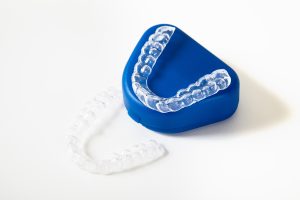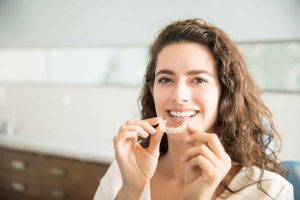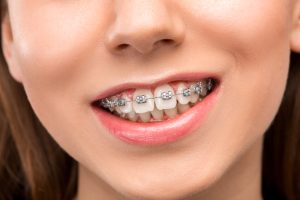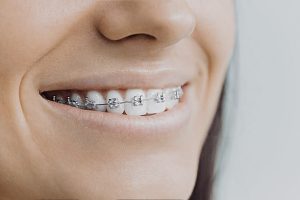Children, teens, and adults alike need to take extra care with their daily oral hygiene when wearing braces to straighten their teeth. In honor of Oral Health Month in June, we have some tips to share for keeping braces clean and your teeth healthy. Whether you are a parent of a child or teen in braces or are an adult undergoing orthodontics to straighten your teeth, healthy habits like brushing and cleaning between teeth are more important than ever to achieve a healthy smile after the braces come off!
Why You Should Clean Your Braces
It often helps to understand why you need to focus extra hard on cleaning your teeth while wearing braces. Oral bacteria don’t take a break when you start orthodontic treatment; in fact, it’s just the opposite! Instead of only hiding between teeth and around the gum line, oral bacteria can now accumulate around orthodontic hardware and grow into thriving colonies of sticky plaque. This biofilm is consumed and processed by oral bacteria and releasing acid. These germs then collect around brackets and bands and harden into tartar that needs to be removed by your dentist.
It is why you need to pay extra close attention to your teeth in braces, so they are healthy when your braces come off. You don’t want to have your braces removed only to find that tooth decay and gum disease are busy damaging your smile. Stepping up your daily at-home oral hygiene will help ensure your smile stays healthy and your teeth stay bright when the braces are removed. Consider protecting your orthodontic investment by investing in oral tools you can use to best clean your braces: a high-quality toothbrush, floss, interdental cleaner, and an at-home oral irrigation system.
When to Brush
Brush your teeth after every meal or at least four times a day when wearing braces (after breakfast, lunch, dinner, and before you go to sleep for the night). Granted, brushing your teeth can be tricky when you are away from home. If you can’t brush after a meal, the next best thing is thoroughly rinsing your mouth out with water to get rid of food particles and the sugary or starchy remnants of your meal. Leftover remains can collect around your teeth and leave you with plaque.
Brushing With Braces
No matter how you brush your teeth, using a manual or electric toothbrush, aim for a compact head to reach all the tooth surfaces while you are wearing braces. Many orthodontists recommend using a soft-bristled toothbrush or powered toothbrush to do the job. Be sure to hold your toothbrush at a 45-degree angle on the gum line, gently brushing back and forth and toward the biting surfaces where bacteria and oral debris collect.
Remember to brush for two minutes every time you clean. Now would be a good time to break out your favorite tunes to brush long enough to be thorough! Brush around all the components of the brace hardware as well as every side of each tooth. Pay extra attention around the gum line, and don’t forget the tongue and roof of your mouth.
Since brushing your teeth four times a day around metal or ceramic hardware can make your toothbrush wear out sooner, replace your toothbrush more often (every three to four months). A good rule of thumb is to replace your toothbrush (or toothbrush head) when the bristles begin to fray.
Flossing With Braces
Flossing can be tricky to do when dealing with braces hardware, but it’s more important than ever. Floss at least once a day to get rid of oral debris stuck between teeth. To make this job easier, many people have found that using a water flosser (or oral irrigator) can make this task pleasant and effective. Just be sure to be thorough and floss at least once a day.
Did You Know?
Avoid or limit sugary and starchy foods to keep your teeth healthy while wearing braces, but snacking on cheese is one tooth-friendly food you can enjoy without worry. It protects the pH balance in your mouth by lowering the oral acids that cause tooth decay.
Practice daily oral hygiene habits that will last while wearing braces and after you take them off!

